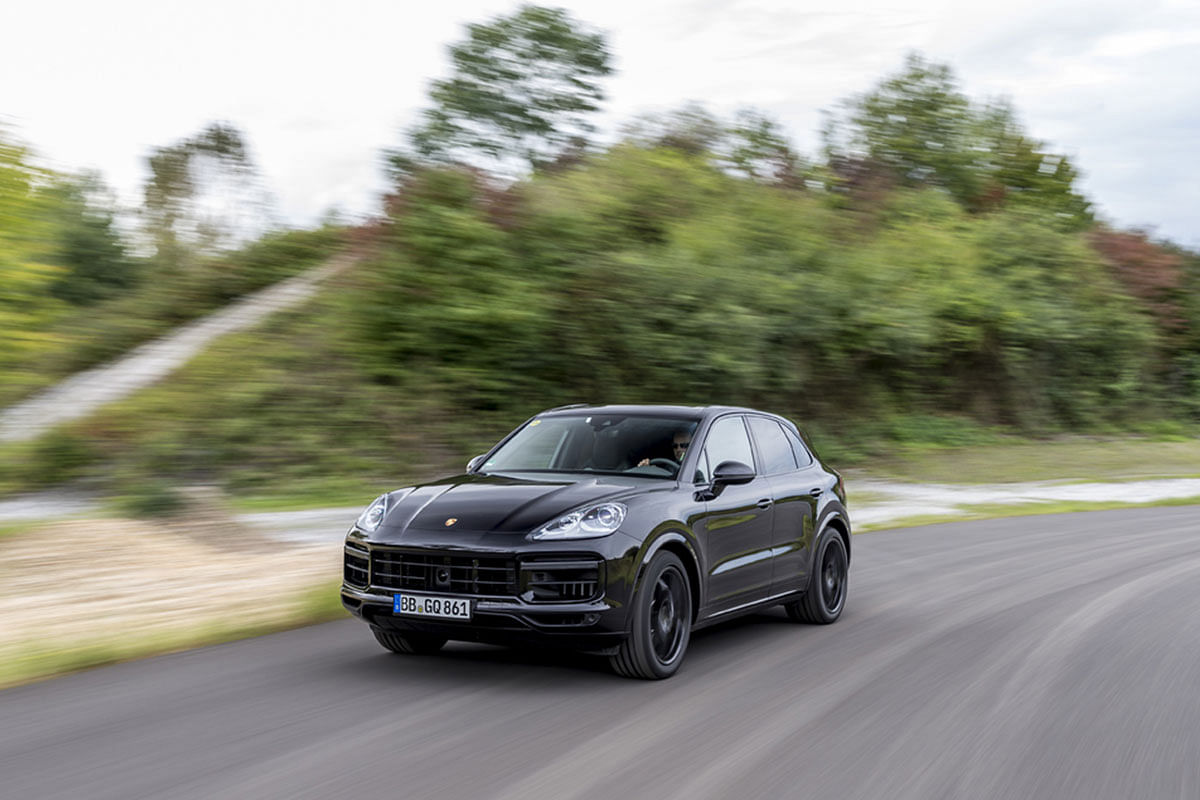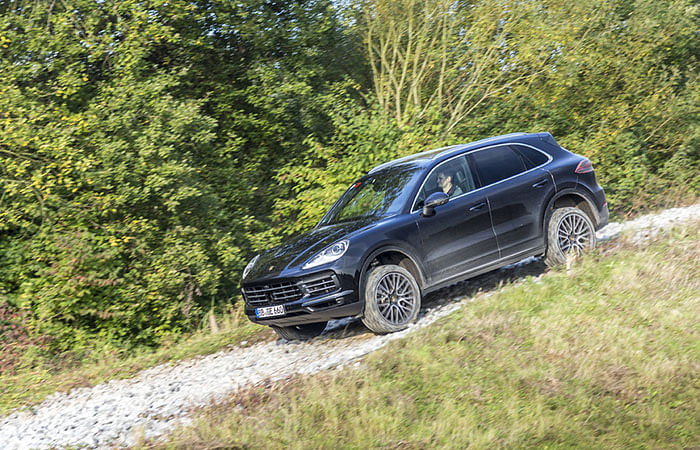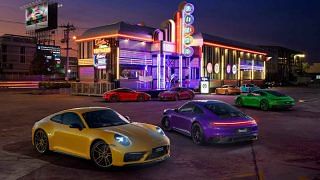[dropcap size=small]T[/dropcap]he all-new, third-generation version of the Porsche Cayenne has been introduced. But it does not look very different from the second-generation model, which also has similar styling to its predecessor, the first Porsche sport utility vehicle.
The 2018 Cayenne does not share with the previous model any body panels, nor the body structure (now comprising 47 per cent aluminium by weight, including the roof, doors, tailgate and bonnet).
I had to look carefully to spot the differences in exterior design. A light strip between the tail-lights, like that on the new Panamera, is the new Cayenne’s most distinguishing design feature.
And if you are overtaken by one, you will also notice an active rear spoiler at the top of the tailgate. This is the first time such a device has been used on an SUV.
The interior, on the other hand, is dramatically different from any other Cayenne.
There is a 312mm touchscreen HD display in the centre of the dashboard and there are two 178mm displays flanking the analogue tachometer within the instrument cluster.
All the displays provide a wide range of information for the driver. The central touch screen serves as the main input panel for the driver or front-seat passenger.
Porsche’s latest PCM (Porsche Communication Management) can be connected online for navigation and media. Depending on the country the driver is in, PCM provides on-demand route information, including traffic status, parking availability, weather and specific services provided by Porsche.
With performance being a priority for Cayenne customers, the question is whether this new car is likely to be one of the sportiest full-sized SUVs.
All the engines are new and turbocharged. The base Cayenne comes with a single-turbo 2,995cc V6 engine that produces 340bhp and 450Nm, the torque staying constant between 1,340rpm and 5,300rpm.
The Cayenne S uses the same V6, but with a slightly shorter stroke (hence 2,894cc), and adds another turbo and 100bhp. Torque rises by a hundred, too, to 550Nm, which peaks at 1,800rpm and does not fade until 5,500rpm.
Both these V6 engines benefit from Porsche’s VarioCam Plus system, which alters the timing of the camshafts and features a cam-shift mechanism on the inlet camshaft that swops to a different cam for more lift.
Just introduced last week at the Frankfurt Motor Show is the flagship Cayenne.
Its 3,996cc biturbo V8 is a highly respected member of the Volkswagen Group engine family, having provided the Bentley V8, Audi RS6 and Porsche Panamera Turbo with supercar levels of performance.
Tuned for 550bhp (from 5,750 to 6,000rpm) and 770Nm (1,960 to 6,000rpm), the 2,175kg Cayenne Turbo sprints to 100kmh from a standstill in 4.1 seconds.
The standard transmission is an eight-speed automatic (not dual-clutch PDK), with an electronic centre-differential to modulate torque transfer rear to front and vice versa.
A new brake disc surface-coating has also been introduced with the new Cayenne Turbo. The cast steel disc is coated with a 0.15mm layer of tungsten-carbide plasma, making it corrosion-resistant and looking almost mirror-finished after 600km of usage.
At a testing facility outside Dusseldorf, Porsche presented technical details of its new Cayenne.
I was not allowed to drive the car, but as part of the workshop, I was driven through a gravel-filled, rocky and undulating terrain, then a high-speed tarmac course.
The wet weather played a significant role in showing off the Cayenne’s uncanny off-road ability.
It was even more impressive on the wet and sinuous circuit, with the Porsche-trained drivers – all with professional racing experience – obviously enjoying themselves while drifting the Cayennes on some of the curves.
No doubt, the electronically controlled four-wheel drive, four-wheel steering and expert drivers made it look easy, but this is still an SUV that weighs more than two tonnes.
Story first appeared on The Straits Times. The writer contributes to Torque, a motoring monthly published by SPH Magazines.









